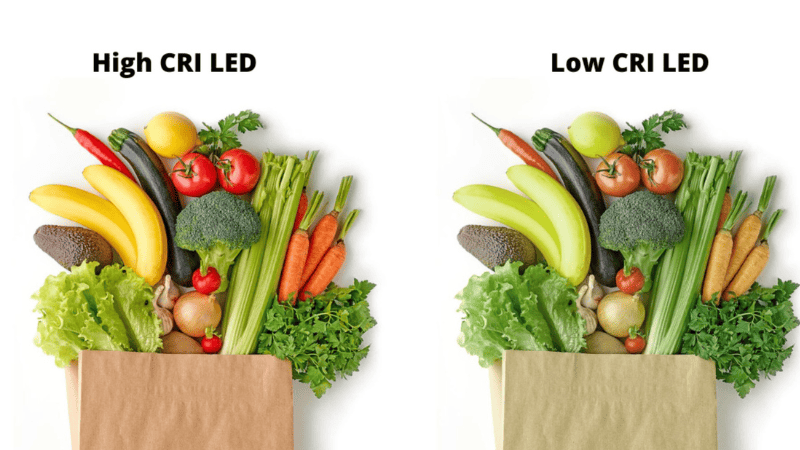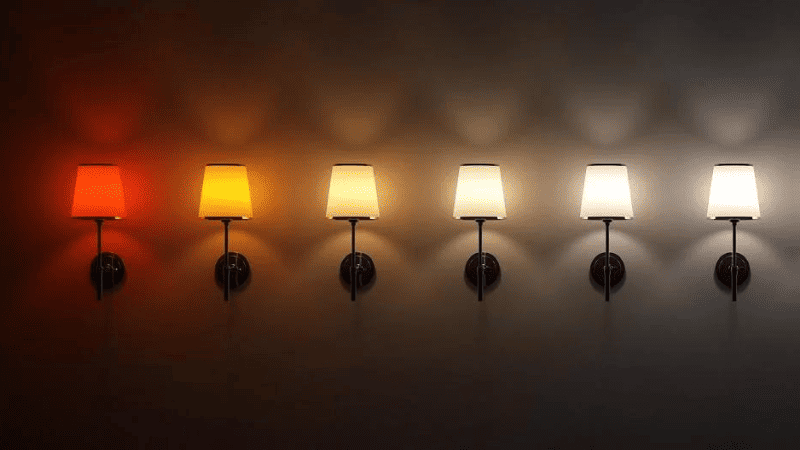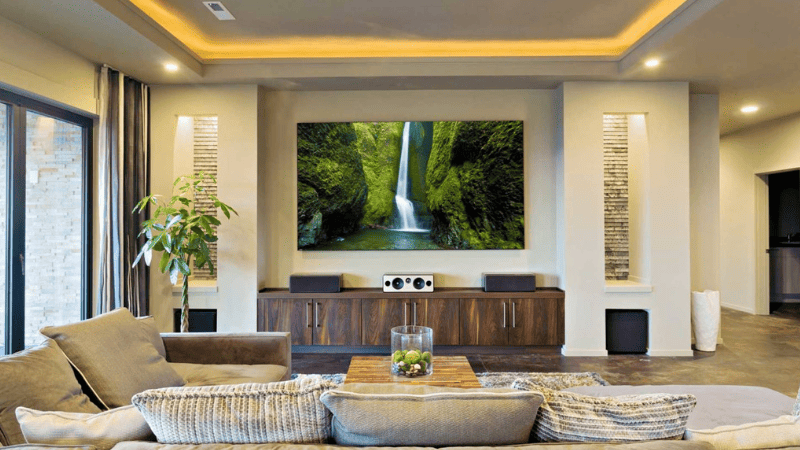What Is Color Temperature?
Color temperature (CCT) indicates the appearance of the color of the light from the lighting item, describing the warmth (yellowish appearance) or coolness (bluish appearance) of a light source.
The CCT is measured in kelvin units with higher numbers depicting bluer or “cooler” tones like the fluorescent tubes used in industrial settings (3100K to 4500K) and lower numbers corresponding to orangish, yellower, softer, “warmer” tones from an old incandescent lamp (2000K to 3000K)
When choosing a light bulb and considering color temperature, it is essential to understand that color temperature isn’t exactly about ‘color’ or the ‘temperature.’ It is the appearance of the light emitted from different categories of light bulbs or tubes.

Technical Explanation of CT – Color Temperature
Why does CCT go from “warm” (yellow) to “cool” (blue), and yet the actual temperature goes from low to high? This perplexing oddity is not prevalent only among photographers but wherever the illumination color is referenced. “Cool” is correlated with bluer colors simply because humankind’s minds associate it with cooling things like snow.
On the other hand, we tend to associate “warm” with colors of a flame or warm subjects like the campfire.
In other words, let’s take an example of a blue flame (blue flames burn at a higher temperature compared to red or yellow flames) which is considered the hottest!
The temperature difference between a blue and red blaze is negligible. Still, it reminds us why “cool blue” and “red hot” show close similarities with Kelvin numbers that operate in the opposite direction.
Ask For Free Quote
Let us Respond Promptly for your Needs :)
The Scale Used to Characterize the White Light
Understanding the scale used to characterize white light is crucial for selecting the right lighting for your needs. In this section, we’ll explore the Color Rendering Index (CRI), which measures light quality on a scale from 0 to 100%.
Color Rending Index (CRI) (a scale of 0 – 100%)
CRI (color rendering index) is a beneficial illuminance spec capable of accurately predicting the light source’s potential to reveal the colors of the object it illuminates. Sources of illuminance with a high coloring index are desirable in color-critical applications like operation theatre and art restoration.
100 is the top “score” with excellent color production and would reveal what can be seen during the bright daylight.
Accordingly, each bulb, tube, or lamp type can render colors.
CRI Between 0 – 70
- Mercury-based clear luminaires
- Fluorescent tubes
- Low-pressure sodium vapor lights
- High-pressure sodium (HPS) vapor lights
CRI Between 70 – 90
- Standard LED lights
- High-pressure sodium (HPS) vapor lights
- Fluorescent tubes
- Metal halide luminaires
CRI Between 90 and 100
Efficient in revealing the entire spectrum of color shades.
- High-fidelity LED lamps
- Incandescent lamps (Basic light bulbs)

Choosing a Low-LED Color Temperature Bulb
The lower number of the color temperature spectrum (in LED) ensures a relaxed and warmer illumination environment. If you are considering upgrading your house’s illuminance status but do not want too harsh and bright LED lights, the 2000 kelvin– 3500 kelvin LED lights are suitable for your needs.
Choosing a Medium LED Color Temperature Bulb.
A medium range of the color temperature spectrum (in LED) ensures a focused and alert illumination environment. Medium-range LED light bulbs with a range between 4000 kelvin – 6000 Kelvin are considered the “workhorse” of LED light bulbs. The lights help to increase productivity in working environments.
Choosing a High LED Color Temperature Bulb
LED light close to natural daylight ranges from 6500 Kelvin and up. These lights are the brightest, bluer in color (like the sky-blue color), and best for activities that need attention to detail, like jewelry making, carpentry, art (drawing), and more.
Ask For Free Quote
Let us Respond Promptly for your Needs :)
What Color Temperature Do I Choose?
A decade ago, options for CCT were lower – so it was of minimal significance when purchasing a light bulb. This is because the traditional incandescent (an electric light with a wire filament heated until it glows) and halogen light bulbs (an incandescent electric light consisting of tungsten filament) are warm white.
However, there are plenty of options as a range of color temperatures is available. In saying that, when you purchase a compact fluorescent lamp (CFL), linear fluorescent (gas-discharge lamp), or light-emitting diode (LED) light bulb, you have the option to choose the CCT that aligns with the lighting needs of the area or the particular activity.
You can buy a warm (yellowish), neutral (between warm and cool white), or cool (bluer) bulb – or if you buy a smart LED (light-emitting diode) light bulb, you can change the CCT (in addition to other features) using a smartphone application.

Various attributes must be considered when choosing the suitable temperature or even RGB color changing. The first factor is the type of room/space you want to place the lighting. Secondly, you need to ascertain the main objective of the lighting in that particular room.
It is also important to first assess the amount of natural lighting already existing in the area, the current space being used, and what kind of ambiance you want to establish with the illuminance.
To make this selection easier, some important information per color temperature has been discussed below. This information ensures you can make the most appropriate and perfect selection for any bulb or tube lighting.
Less than 2000K
A very dim light, just like the one from the candle. It is most suitable for places with a preference for low light and ambient illumination. It is rarely used but is sometimes most suitable for the right setting.
Extra Warm White Light (1700 – 2700 Kelvin)
The extra warm tones of this temperature have an atmosphere-enhancing characteristic. This temperature range gives a soft white glow or brightness (often yellow in appearance) suitable for dining rooms, bedrooms, living rooms, and outdoor spaces like cinema halls, pubs, hotels, and restaurants.
Warm White Light (3000 Kelvin)
This is the incandescent lighting color and has an inviting character. It is crisper yellowish-white which effectively reduces imperfections and relaxes the eyes. The slight yellowish warmth contributes coziness of the indoor space.

This type of light creates an inviting environment most suitable for counters, waiting rooms, corridors, halls, foyers, spas, reception areas, and changing rooms. You have a wide choice range in LED lighting of 3000 Kelvin. At workplaces, color temperature plays a key role in energizing employers.
General lighting (3000 Kelvin) has a larger beam angle and comes in different light sources and fixtures, like LED tubes and panels.
Neutral White Light (4000 Kelvin)
Kelvin is bright, fresher, vibrant, and neutral light,’ most suitable for work environments. This color range contributes a balanced color tone, which is neither yellowish nor bluish. This establishes an environment that keeps the workers alert throughout the day.
It is a preferred light in places requiring task lighting, like offices, showrooms, schools, beauty salons, vanities, hairdressing salons, and the kitchen. The main objective of the neutral white light is to highlight paintings and products.
Daylight (6500 Kelvin or ‘Work Like Temperature’ or ‘Cool Day Light’)
6500 Kelvin is at the lower end of the spectrum, possesses a bluish or stark white appearance, and is considered sunlight at high noon. It is preferred for specific sectors and situations, especially where very bright illumination is needed.
This refreshing light is most suitable for laboratories, security lighting, operation rooms, printing offices, displaying artwork, and treatment rooms (for example, lighting above a treatment chair in a dental setup). These lights are perfect for fixtures that can be adjusted with ease.
6500K and Up (Bluish Hue-Like Illumination)
The LED lighting with a color temperature of 6500 Kelvin and up mimics the daylight. Best for very bright light task lighting

A simplified guide on what color Temperatures typically work best by application
| Application | Recommended Color Temperature |
|---|---|
| PARKING/OUTDOORS | |
| Outdoor site lighting, security lighting, parking garages | 3000-4000 Kelvin, but cooler tones in the 4000-5000 Kelvin range are the most common |
| RETAIL | |
| General retail | Lighting within the 2700 Kelvin to 4000 Kelvin range |
| Silver, other jewelry displays, especially diamonds | Cooler color temperatures in the 3500-4500 Kelvin+ range |
| Jewelry display, mixed metals | Alternate warm (2700 Kelvin) and neutral (4000 Kelvin) temperatures based on whatever is on display |
| Eat points/Restaurants | |
| High-end spacious restaurants | Warmer color tones (1800-2700 Kelvin) |
| Small/Quick-serve restaurants | Some prefer warmer color temperatures, but not as warm as too spacious restaurants. Color temperature 2700 Kelvin to 3500 Kelvin range is good. |
| Hotel | |
| Space in the hotel that serves as an entrance (Hotel lobbies) | A few things to consider in the case of hotels are ambiance, atmosphere, space, brand, and location. Warmer color temperatures (yellower) between 1800-3000 Kelvin are suitable for such places. |
| Passages within houses and buildings and common areas | Match the CCT of passages to the lobby |
| Guest rooms | A color temperature within the 2700-3000 Kelvin range is preferred for an inviting and warm ambiance. |
| Commercial Office | |
| Office space | (3000-4000 Kelvin) |
| Healthcare | |
| Hospitals | For alertness and coordination in the hospitals, cooler color temperatures (3500 Kelvin to 5000 Kelvin) are good. |
| Universities, Educational Institutions like Schools | |
| Dining areas | Lighting in the 2700-3500 Kelvin range |
| Classrooms and Common areas | Cooler color temperatures (3500-5000 Kelvin) are best for setting an energetic atmosphere and encouraging alertness. |
Discover the Perfect Lighting Temperature at RC Lighting Now!
At RC Lighting, we’re dedicated to perfection, quality, and sustainability. Since our establishment in Jiangmen, Guangdong Province in 2013, we’ve prioritized excellence, earning ISO9001 certification and a reputation for top-notch indoor and outdoor lighting products.
Our commitment to quality is reflected in our CE, RoHS, and UL/ETL certifications, ensuring you get the best. With a team of highly skilled engineers, we’re here to deliver the ultimate lighting experience. Contact us today to discover how RC Lighting can illuminate your world.



